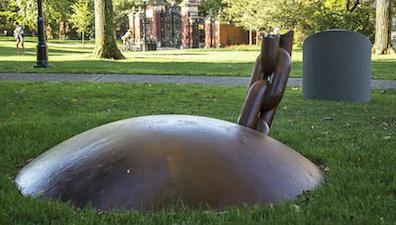Brown University recently dedicated its Slavery Memorial. The memorial includes a 4.5 ton cast-iron sculpture that sits in front of University Hall, Brown’s oldest building that was built in part by slave labor. The sculpture, which depicts a large iron ball and a chain where the third and final link is broken, was created by noted African American sculptor Martin Puryear.

Near the sculpture is a plaque. The inscription reads in part: This memorial recognizes Brown University’s connection to the trans-Atlantic slave trade and the work of Africans and African-Americans, enslaved and free, who helped build our university. Rhode Islanders dominated the North American share of the African slave trade, launching over a thousand slaving voyages in the century before the abolition of the trade in 1808, and scores of illegal voyages thereafter. Brown University was a beneficiary of this trade.
 Martin Puryear was born in Washington, D.C., in 1941. After earning his bachelor’s degree from Catholic University in Washington, D.C., he joined the Peace Corps in Sierra Leone and later attended the Swedish Royal Academy of Art. He received a master of fine arts degree in sculpture from Yale University in 1971.
Martin Puryear was born in Washington, D.C., in 1941. After earning his bachelor’s degree from Catholic University in Washington, D.C., he joined the Peace Corps in Sierra Leone and later attended the Swedish Royal Academy of Art. He received a master of fine arts degree in sculpture from Yale University in 1971.










